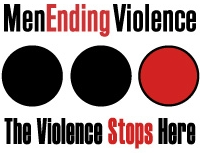
An often overlooked aspect of intimate partner abuse is its impact on children. Sociologist Evan Stark’s latest book, Children of Coercive Control, sheds light on how coercive control not only affects women but also deeply harms children. Stark’s work redefines domestic abuse, emphasizing that it goes beyond physical violence to include tactics like isolation, intimidation, and financial abuse.
Stark’s previous book, Coercive Control: How Men Entrap Women in Personal Life, was pivotal in changing perspectives and laws globally. His new book continues this critical discourse by detailing how abusers use their control over women to also harm their children.
1. Abusive partners isolate and control children as a way to control their adult partners
Abusive partners isolate and control children as a way to control their adult partners. Sometimes it is the primary way. abusive partners intentionally “destroy” children to dominate their mothers. Stark describes this mistreatment of children as a “staged performance” directed toward the primary victim, his partner.
2. Intimidation and fear-based discipline
Form part of a campaign to induce terror and reduce a child’s courage and confidence. The ultimate goal is to control the mother. Stark writes, “Intimidation runs throughout coercive control. Only fear makes it seem rational for children to say “yes” when they mean “no,” to remain silent when it is time to speak and to give up what is rightfully theirs.”
3. Abusive partners intentionally terrorize their partners in front of the children
To make children see their mothers as weak. This is a deliberate attempt to fracture the mother-child relationship.
4. In a family with coercive control, authorities should consider the abuse victim and children’s interests together
They are inextricably linked.
5. Infants and preschoolers are a “special case.”
Domestic abuse of a mother produces stress-induced fear in young children. Coercive control threatens young children’s emotional security. Their distress will often show up as disturbed moods, sleep and eating problems, and difficulties interacting with peers and adults. These disturbances are how young children reveal that something is very wrong in their world. Sometimes symptoms do not appear right away; Stark refers to this as the “sleeper effect.”
6. Children are actively engaged in coping with the coercive control of their moms
Even when they appear to be “doing fine.” Stark writes that children interpret, predict and assess “episodes” at home. They wonder if they have caused the problems. Children worry. Even young children take steps to protect themselves, their siblings and their mothers. This is exhausting work for a child or teen. The weight of coping with coercive control interferes with children’s learning and play.
7. Children are at high risk when the abusive partner coercively controls and threatens his partner (or ex-partner)
This is true even when the abusive partner has never before targeted the children directly. The abusive partner may have no negative feelings toward the children. He may harm or even kill them to show his (ex)partner what he is capable of doing.
8. Post-separation, abusive partners harass and stalk their children to demonstrate their total power
They violate boundaries—whether boundaries have been imposed by their exes, their children or even the courts. This terrorizes children. Stark provides the example of an abusive father with a protective order against him suddenly appearing at his child’s school performance, knowing full well that this violates a court order and is against his child’s wishes. The abusive partner is essentially daring his victims to call the police and “create a scene.”
9. Chaotic abusive partner behavior terrorizes children
Some abusive partners create continuous turmoil. Substance abuse or mental illness may make the chaos worse but are not the cause. On any given day, the children do not know what mood the abusive partner will be in, what will set him off, if it is safe to go home, to laugh, to eat, etc. To outsiders, this way of living can seem messy. But to children, it is terrorizing. Stark writes that abusive partners create havoc according to a “criminal logic” that benefits them personally.
10. “Children can thrive only when women are safe, equal, and free.”
Stark emphasizes that coercive control domestic abuse is a crime against a person’s liberty. And most primary victims are women. Involved children always suffer as well. His book emphasizes that societies can only protect children by supporting and protecting women’s rights.
Children of Coercive Control by Professor Emeritus Evan Stark
Children of Coercive Control extends Evan Stark’s path-breaking analysis of interpersonal violence to children, showing that coercive control is the most important cause and context of child abuse and child homicide outside a war zone, as well as of the sexual abuse, denigration, exploitation, isolation and subordination of children.
As an organization dedicated to ending violence in all its forms, BWSS stands in solidarity with victims and survivors. For resources on safety, accessing support, and taking action against gender-based violence, visit our website.
You are not alone.
If you or someone you love is in need of support, please contact the Battered Women Support Services Crisis Line:
Call toll-free: 1-855-687-1868
Metro Vancouver: 604-687-1867
Email: EndingViolence@bwss.org




